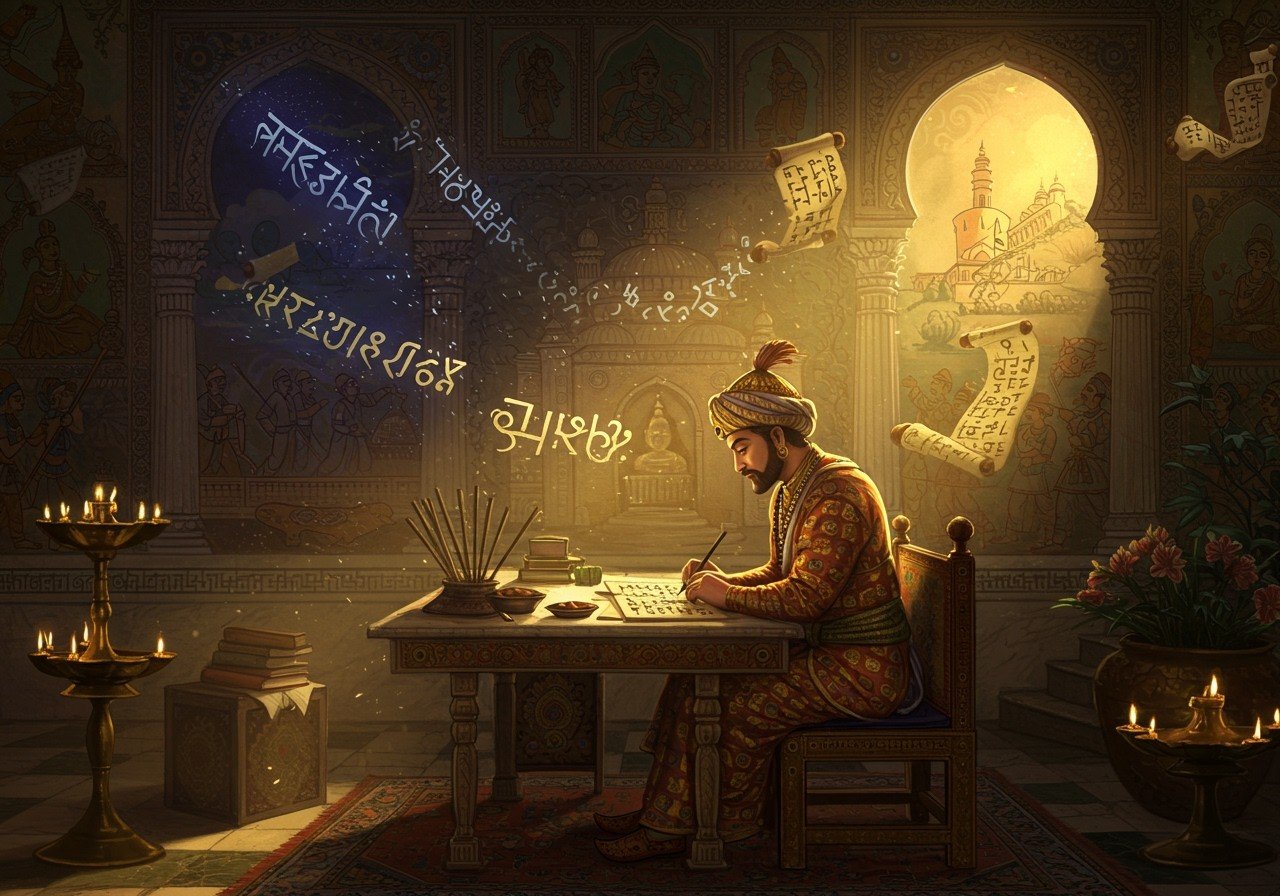
The Kushan Empire, a powerful force between the 1st and 3rd centuries CE, stretched across Central Asia and Northern India. Known for its diverse cultural influences, the empire’s languages and scripts played a crucial role in shaping its identity. Delving into this linguistic landscape reveals insights into the empire’s rich heritage, governance, and cultural exchange.
Historical Overview
Originating from the Yuezhi, a nomadic group near China’s borders, the Kushans conquered Bactria and expanded into modern-day Afghanistan, Pakistan, and North India. This expansion created a melting pot of cultures and languages, enriching the empire’s linguistic tapestry. The Silk Road’s influence further facilitated the exchange of languages, ideas, and scripts, contributing to the empire’s cosmopolitan nature.
Languages of the Kushan Empire
The Kushan Empire’s multiculturalism fostered a diverse linguistic environment. Several languages coexisted and interacted:
- Greek: Initially used for administration due to the Hellenistic legacy of the Greco-Bactrian Kingdom. It continued to be used even after Bactrian became the official language.
- Bactrian: This Middle Iranian language, written in a modified Greek script, became the official language of administration and governance, as evidenced by the Rabatak inscription commissioned by King Kanishka. Another Kushan emperor, Vima Kadphises, also used this language.
- Sanskrit: This ancient Indo-Aryan language held significant religious and scholarly importance, particularly for Buddhist texts and inscriptions.
- Prakrit: These vernacular languages served as the common tongue among the general populace, reflecting the diverse regional dialects.
- Middle Iranian Language: It was one of the official languages of the Kushan Empire, which spanned Central Asia and northwestern India from 200 B.C. to A.D. 700.
- Kushan Language: The language used by some Kushan rulers, as evidenced by the inscriptions from Dasht-i Nawur and Surkh Kotal, although deciphering these inscriptions remains a challenge due to their poor preservation.
Scripts of the Kushan Empire
Mirroring its linguistic diversity, the Kushan Empire employed various scripts:
- Greek Script: Adapted for writing Bactrian, it appeared on inscriptions, coins, and official documents, highlighting the empire’s Hellenistic influences.
- Kharosthi Script: Used for administrative records and inscriptions, particularly in the northwestern regions of the empire.
- Brahmi Script: Employed for writing Sanskrit and Prakrit texts, reflecting the growing influence of Indian languages and culture.
The Role of Language and Script in Administration
The Kushan rulers strategically employed language and script to govern their vast, multicultural empire:
- Multilingual Inscriptions: Bilingual and trilingual inscriptions, often featuring Greek, Bactrian, and Kharosthi or Brahmi, facilitated communication across diverse linguistic groups.
- Bactrian as the Official Language: The adoption of Bactrian as the official language helped unify administration and consolidate imperial authority.
- Sanskrit and Brahmi for Integration: The use of Sanskrit and Brahmi for religious and cultural texts demonstrates the empire’s integration of Indian traditions.
Literary and Religious Texts
The Kushan era witnessed the production of numerous literary and religious texts:
- Buddhist Texts: Buddhist scriptures flourished, written in Sanskrit, Prakrit, and even Tocharian, reflecting the spread of Buddhism across the empire.
- Gandharan Buddhist Texts: Some of the earliest known Buddhist manuscripts, written in Kharosthi, provide invaluable insights into early Buddhist teachings.
- Inscriptions and Edicts: Royal inscriptions and edicts, preserved on stone and other materials, offer crucial historical information about Kushan rulers, policies, and events.
Poojn.in: Your Source for Sacred Items
Are you looking for sacred items for your spiritual practices? Poojn.in, India’s leading online store for cultural and religious goods, offers a wide selection of high-quality products. Whether you need puja items, idols, or religious texts, Poojn.in has you covered. Explore our extensive collection at www.poojn.in.
Conclusion
The Kushan Empire’s linguistic diversity stands as a testament to its cultural richness and sophisticated administration. The strategic use of multiple languages and scripts facilitated effective governance and cultural exchange. Studying these linguistic aspects provides a deeper understanding of the empire’s historical significance and lasting legacy.
Explore more about Indian culture and traditions on our blog: Chhinnamasta Devi: Rajrappa’s Powerful Goddess – History, Legends & Significance and Rajrappa: Nature, Spirituality, and Industry Unite.
Find high-quality puja items and religious goods on Poojn.in: Kushal Mangal Sandalwood Puja Prayer Agarbatti Incense Stics Liberty Pack of 6 Box 100 gm each and Laddoo Gopal – Ashtadhatu Brass Laddu Gopal Murti.


